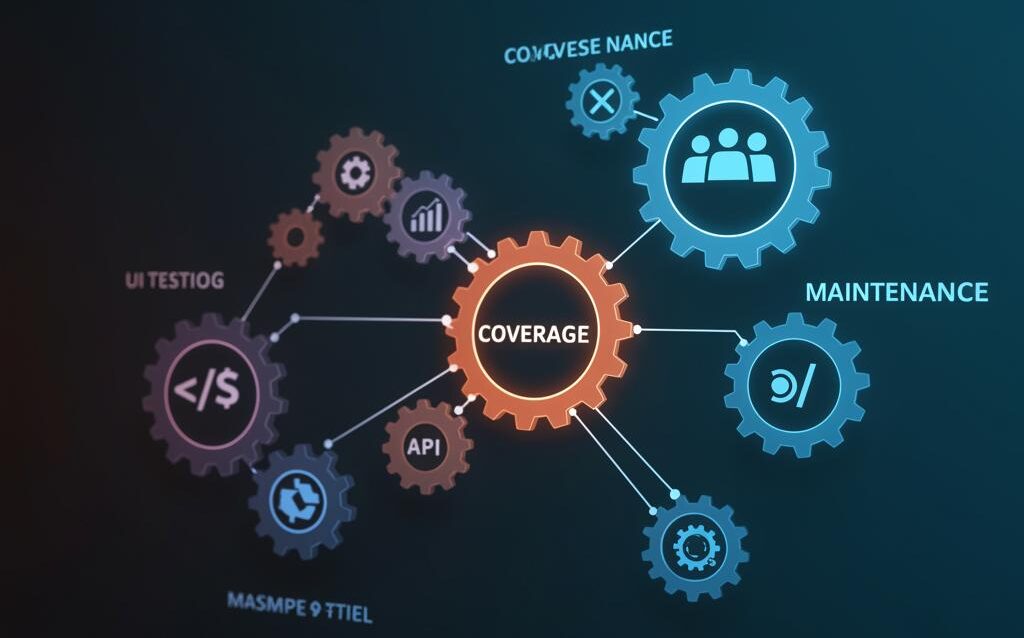Test Automation Strategy: Coverage vs. Maintenance
Test Automation Strategy: Balancing Coverage and Maintenance
Test automation is a cornerstone of modern software development, enabling faster feedback cycles and improved product quality. However, a poorly planned automation strategy can quickly become a burden, leading to high maintenance costs and diminishing returns. The key to successful test automation lies in striking a delicate balance between achieving adequate test coverage and minimizing the effort required to maintain the automated tests.
Understanding the Core Principles
Test Automation Pyramid
The Test Automation Pyramid is a fundamental concept for building an effective strategy. It suggests focusing on automating tests at lower levels, which are typically faster, more stable, and less expensive to maintain.
- Unit Tests: Form the base of the pyramid. These tests verify individual components or functions in isolation. They are crucial for early bug detection and should constitute the largest portion of your automated tests.
- Integration Tests: Verify the interaction between different components or modules. They are more complex than unit tests but provide valuable insights into how different parts of the system work together.
- End-to-End (E2E) Tests: Simulate real user scenarios and validate the entire application flow. These tests are the most expensive to maintain due to their complexity and reliance on the UI, so they should be used sparingly and focus on critical user paths.
Prioritizing Test Coverage
Not all features are created equal. Prioritize test automation based on risk, business impact, and frequency of use. Focus on automating tests for:
- Critical Functionality: Core features that are essential for the application to function correctly.
- High-Risk Areas: Features that are prone to errors or have a history of bugs.
- Regression Testing: Tests that ensure new changes haven’t introduced regressions in existing functionality.
Strategies for Minimizing Maintenance
Choosing the Right Automation Tools
Selecting the appropriate automation tools is crucial for long-term maintainability. Consider factors such as:
- Technology Stack: Choose tools that are compatible with your application’s technology stack.
- Ease of Use: Opt for tools that are easy to learn and use, reducing the learning curve for your team.
- Community Support: A strong community provides valuable resources, documentation, and support.
- Reporting Capabilities: Tools should provide clear and comprehensive reports to facilitate debugging and analysis.
Designing Maintainable Tests
Writing maintainable tests is an art. Follow these guidelines:
- Use Descriptive Test Names: Clearly indicate what the test is verifying.
- Keep Tests Small and Focused: Each test should verify a single, specific functionality.
- Avoid Hardcoding Values: Use configuration files or data-driven testing to parameterize tests.
- Implement Page Object Model (POM): For UI testing, use POM to encapsulate UI elements and interactions, making tests more resilient to UI changes.
- Use Locators Wisely: Prioritize stable locators (e.g., IDs, names) over fragile ones (e.g., XPath).
Continuous Integration and Continuous Delivery (CI/CD) Integration
Integrating your automated tests into your CI/CD pipeline allows for early detection of regressions and faster feedback. Automated tests should be executed automatically with every code commit or build.
Optimizing Test Execution
Parallel Test Execution
Running tests in parallel can significantly reduce the overall test execution time, especially for large test suites. Most automation tools support parallel execution.
Test Prioritization and Selective Test Execution
Implement mechanisms to prioritize tests based on their importance or the specific code changes. Consider executing only the tests that are relevant to the changed code to save time.
Analyzing Test Results and Addressing Failures
Regularly analyze test results to identify flaky tests (tests that sometimes pass and sometimes fail) and address them promptly. Flaky tests can erode confidence in the automation suite and lead to missed bugs.
Conclusion
A successful test automation strategy is not a one-time effort but an ongoing process of refinement and optimization. By understanding the principles of the Test Automation Pyramid, prioritizing test coverage, minimizing maintenance through careful tool selection and design, and optimizing test execution, you can achieve a robust and reliable automation suite that delivers significant value to your software development process. Remember that the goal is to automate effectively, not just automate everything. Balancing coverage and maintainability is the key to long-term success.

